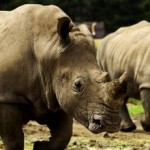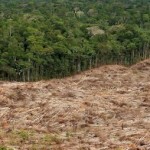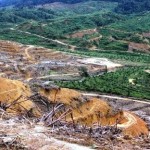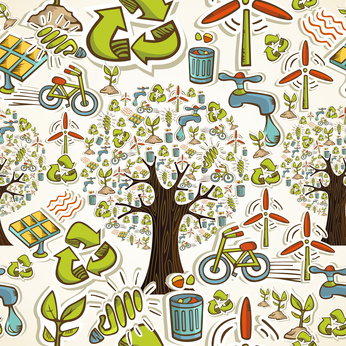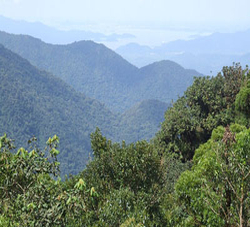For East, Central and West Africa, the net profits from dealing in and taxing unregulated, illicit or illegal charcoal combined is estimated at US $ 2.4 to US $ 9 billion, compared to the US $ 2.65 billion street-value worth of illegal drugs in the region.
With current trends in urbanization and the projected growth of over one billion additional people in Sub-Saharan Africa by 2050, the demand for charcoal is expected to triple at least in the coming three decades. This will generate severe impacts such as large-scale deforestation, pollution and subsequent health problems in slum areas.
The increased charcoal demand will considerably increase the purchasing power of non-state armed groups, including terrorist organizations, and accelerate emissions, if left unchallenged.
Fauna and Flora
The illegal trade in fauna and flora (other than fisheries and timber) has been estimated by different sources to be worth US $ 7 to US $ 23 billion dollars annually.
The trade involves a wide range of species including insects, reptiles, amphibians, fish and mammals. It concerns both live and dead specimens and associated products, which are used for pharmaceuticals, food, pets, and ornamental or traditional medicinal purposes. All of these have a significant value not only on the black market, but to national economies if managed sustainably.
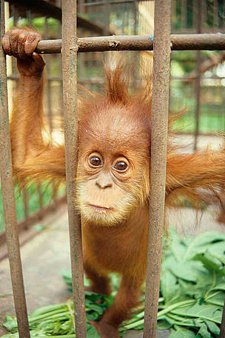
The report highlights poaching across many species, including tigers, elephants, rhinos, great apes and Saiga antelopes:
- The number of elephants killed in Africa annually is in the range of 20,000 to 25,000 elephants per year, out of a population of 420,000 to 650,000. For the forest elephant, the population declined by an estimated 62 per cent between 2002 and 2011. Poached African ivory may represent an end-user street value in Asia of US $ 165 to US $ 188 million of raw ivory, in addition to ivory from Asian sources.
- 94 per cent of rhino poaching takes place in Zimbabwe and South Africa, which have the largest remaining populations. Here, the involvement of organized syndicates has seen poaching rise from less than 50 in 2007 to over 1,000 in 2013. Rhino horn poached last year is valued at around US $ 63 to US $ 192 million.
- Even conservative estimates suggest that the illegal trade in great apes is widespread. From 2005 to 2011, a minimum of 643 chimpanzees, 48 bonobos, 98 gorillas and 1,019 orangutans are estimated to have been lost from the wild through illegal activities. The real figure is more likely to be around 22,000 great apes lost to the wild over that period.
Threat Financing
Wildlife and forest crime plays a serious role in threat finance to organized crime and non-state armed groups, including terrorist organizations. Ivory also provides income to militia groups in the Democratic Republic of Congo (DRC) and the Central African Republic.
Ivory similarly provides funds to horse gangs operating in Sudan, Chad and Niger. Given the estimated elephant populations and the number of projected killed elephants within striking range of these militia groups, the annual income from ivory to militias in the entire sub-Saharan range is likely in the order of US $ 4 to US $ 12.2 million.
Illicit taxing of charcoal, commonly up to 30 per cent of its value, is conducted on a regular basis by organized criminals, militias and terrorist groups across Africa. Militias in DRC are estimated to make US $ 14 to US $ 50 million annually on road taxes.
The primary income of the group operating in East Africa appears to be from informal taxation at roadblock checkpoints and ports. In one roadblock case, they have been able to make up to US $ 18 million per year from charcoal traffic in Somalia’s Badhadhe District. The overall size of the illicit charcoal export from Somalia has been estimated at US $ 360-384 million per year, the group earning up to US $ 56 million of this.
Responses
“Transnational criminal organizations are making immense profits by exploiting our natural resources to fuel their illicit activities, threatening the stability and future development of some of the world’s poorest regions,” said INTERPOL’s Executive Director of Police Services, Jean-Michel Louboutin.
“While there is growing awareness of the dangers posed by wildlife crime, it will require a dedicated and concerted international effort among law enforcement and partner organizations to effectively combat this threat to global security,” he added.
While more needs to be done, the scale and nature of the illegal trade in wildlife has been recognized and some successes have been scored.
One example of international enforcement collaboration is the International Consortium on Combating Wildlife Crime (ICCWC) – which includes the Convention on International Trade in Endangered Species of Wild Fauna and Flora (CITES), UNODC, INTERPOL, the World Bank and the World Customs Organization (WCO). The ICCWC, along with increased collaboration with countries and agencies such as UNEP, has created a more effective structure to provide support to countries in the fields of policing, customs, prosecution and the judiciary.

